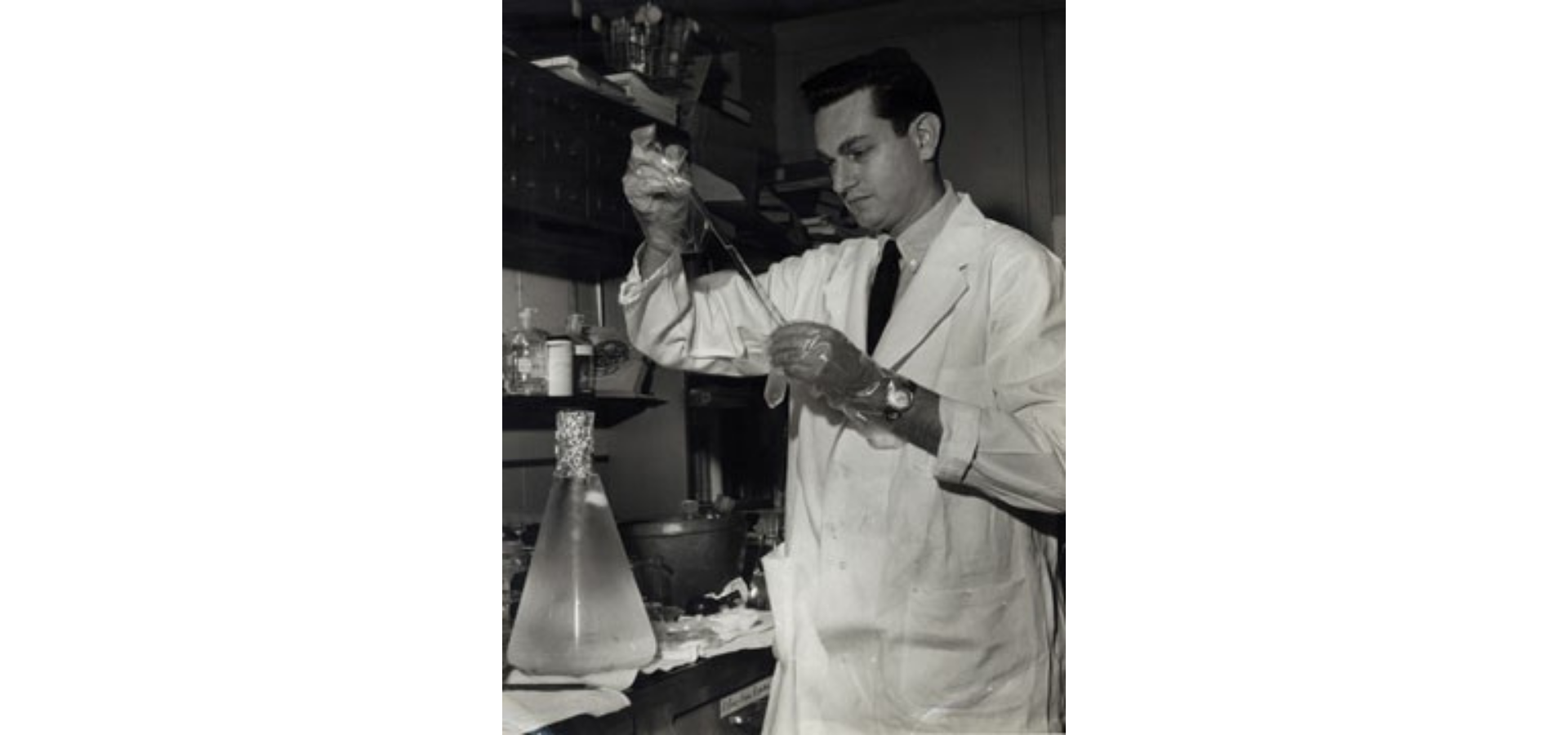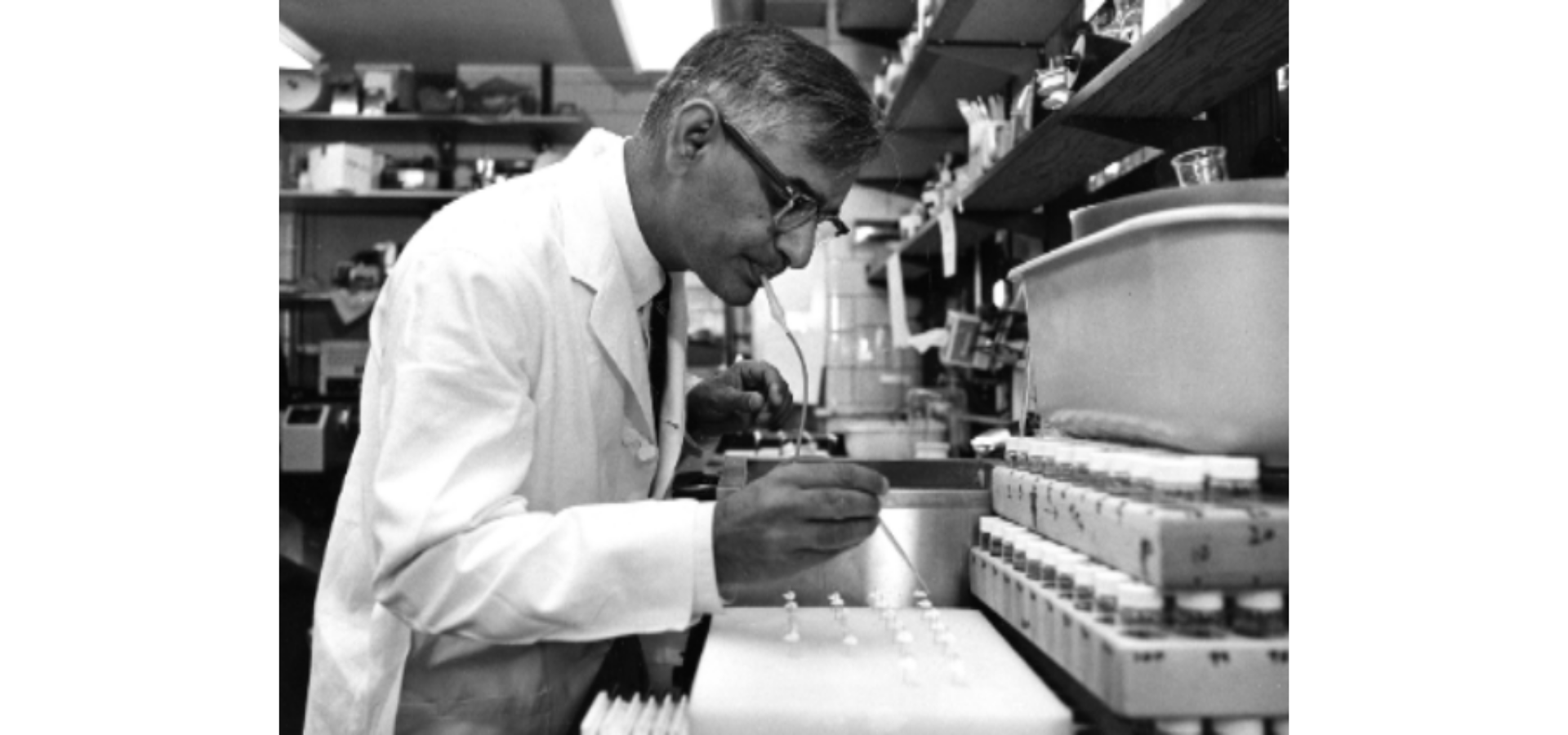The Genetic Code
Oct 2, 2020 | 2 min read

Oct 2, 2020 | 2 min read

In 1953, James Watson and Francis Crick at Cambridge University electrified the scientific world with their model of DNA, the double helix consisting of 4 nucleotides, (A,T,G,C).
By around 1960, the basic chemical pathways through which DNA instructs protein synthesis had been established. However, the genetic code had not yet been cracked…
3:00 in the morning, May 27, 1961, a Saturday: Matthaei added synthetic RNA made of only uracil units to each of 20 test tubes, finding unusual activity in one of the tubes which contained phenylalanine.
Nirenberg and Matthaei immediately understood what had happened. Synthetic RNA made of a chain of multiple units of uracil was transcribed into a chain of the amino acid phenylalanine.
Nirenberg presented his successful poly-U experiment at an international biochemistry congress held in Moscow in August, a few months later. He was acutely aware of his outsider status in this field. Only around 35 people attended his talk
and he described his audience as “absolutely dead”.
But in one of those conventions, a serendipitous meeting with James Watson changed everything. Watson was initially skeptical about Nirenberg’s claims, but he convinced a colleague to attend the paper presentation; when the colleague reported that
Nirenberg’s findings were real, Watson told Crick who arranged for Nirenberg to present his paper again, this time at a major symposium on nucleic acids and at the same congress! He describes the reaction thereafter as “Incredible”.
Using the poly-U experiment as a model, Nirenberg and his colleagues identified nucleotide combinations for the incorporation of other amino acids. The researchers found that the coding units for amino acids contain three nucleotides (a
triplet). Combining four nucleotides in three-letter codes yielded 64 possible combinations (4 x 4 x 4), more than sufficient to describe 20 amino acids.
They discovered the codes for other amino acids: for example, AAA for lysine. Replacing one unit of a triplet code with another nucleotide yielded a different amino acid, for one example, synthetic RNA containing one unit of guanine and two
of uracil (code word: GUU) caused incorporation of valine.
Har Gobind Khorana made one of the most consequential advances in molecular biology by using a hybrid approach that employed organic chemistry to synthesize short sequences of a few nucleotides followed by the use of a copying enzyme to
generate long DNA molecules with many repeating copies of the short sequence. The first of these nucleic acids was made up of a repeating sequence of the two nucleotides U and C, which, after translation, gave an amino acid chain made up of
serine and leucine.
In 1968 Marshall Nirenberg won the Nobel Prize in Physiology or Medicine for his seminal work on the genetic code. He shared the award with Har Gobind Khorana and Robert Holley (Cornell University), who discovered the chemical structure of
transfer-RNA. Collectively, the three were recognized “for their interpretation of the genetic code and its function in protein synthesis."
In 1961 The New York Times, echoing President Kennedy, reported that Nirenberg’s research showed that biology “has reached a new frontier,” with the cracking of the genetic code. Nirenberg, a biochemist from the National Institute of Arthritic and Metabolic Diseases, and German scientist Johann Matthaei described the first base "triplet," a set of three nucleotides that make up a codon. This groundbreaking
discovery led to the deciphering of the entire genetic code over the next five years. These led to the 1968 Nobel Prize in Physiology or Medicine and is seen as one of the most influential discoveries in biological research.

Figure 1.Marshall Nirenberg performing an experiment, circa 1962. Courtesy the National Institutes of Health.

Figure 2.Har Gobind Khorana, Photo: University of Wisconsin-Madison Archives (S04437)